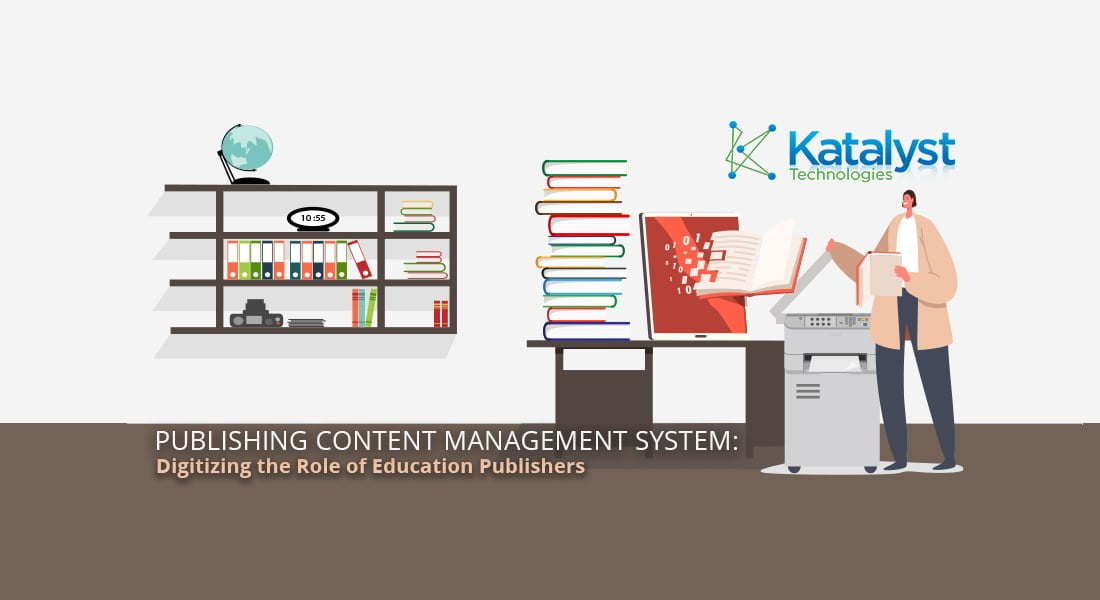
The age of E-books is upon us, and no other industry has felt its success than academic Publishing Content Management System. Since its inception the digital education publishing industry has been booming. According to Statista, the sector is expected to surpass 243 billion U.S. dollars by 2022. These statistics indicate how the new-age technology is reshaping the way schools handle their textbooks, allowing teachers to efficiently instil knowledge in their students.
With online learning becoming the norm amid the pandemic, publishers are looking for ways to digitize their content while ensuring high-quality standards are kept. These new digital learning models help publishers achieve better productivity and reduce operational costs, allowing them to efficiently conquer the market. Moreover, the students and teachers now have more ways to stay connected, as the educational eLearning publishing industry intends to establish engagement across the spectrum. Let us dive in a little deeper to learn more about the future benefits of going digital bring to the table for the education publishing industry.
The benefits of aligning with digital publishing:
Facilitates Distribution and Offers Cost-Effectiveness
New information is always flowing in the education sector, so the publishers have to update their contents and distribute them constantly. This was an extremely daunting process in the traditional format with paper texts and books, especially when it came to mass distribution. It bore huge costs because they had to scrap the older content, update the new ones, republish them in the market. However, the landscape is entirely different with the onset of digital technology in the publishing industry. With eBbooks, they can be easily updated in time and distributed more conveniently and cost-effectively. The emergence of new digital distributions methods, such as mobile apps, online E-books, and many other latest solutions, makes it easier for both the publishers and readers to access the most up-to-date content.
Meets Environmental Demands
With print textbooks, there was also a large cost to the environment. As tons of trees were cut down to make paper out of them, which led to the problems we are witnessing now. According to TCK Publishing, over 2 billion books are printed every year in the U.S., requiring more than 30 million trees to be cut down which lead to the emission of over 40 million tons of carbon dioxide each year. With the production of books harming nature, the term “sustainable” was introduced in the sector; however, stakeholders didn’t pay any heed to them.
The upsurge of digital learning made publishers think about their acts and quickly change their attitude towards the planet. With the onset of online learning, these sustainable solutions are no more “nice-to-have” features. As a result, leading publishing houses, such as Penguin Random House, are incorporating eco-managed service and support systems to ensure minimum waste of books and reduction in emission of the carbon-di-oxide.
Offers Interactive Content
The benefits of making textbooks digital allows publishers to implement dynamic content, such as images, videos, quizzes, and many other features that make learning more fun and interactive. These features allow students to engage far more with their education, something static content in print material can not. E-books can also provide external links to additional resources and various multimedia interfaces, helping publishers to improve the readers’ learning curve. Modern-day learners have an eye for engaging content, which can only be delivered via
Enticing the audience with these interactive elements can also benefit your profits too. A report by
Provides Easy Analytics
The latest solutions developed now even allow publishers to gain a real-time analysis of the published content. These tools help to track user behavior and analyze performance of specific sections to devise suitable strategies. These features allow publishers to make changes to what students like or dislike in their books.
Crank it Up-
Though the pandemic’s effects have waned, the digital shift that boosted the Publishing Content Management System industry is expected to stay. If they wish to stay competitive, more educational publishers must adopt robust digital platforms to ease operations. The e-publishing content management offered by Katalyst Software Services Limited is a leading name in the publishing industry, offering an interactive writing and pre-editing experience that perfectly fits the content. If you want to learn more, contact us today to see what Katalyst can do for you!

